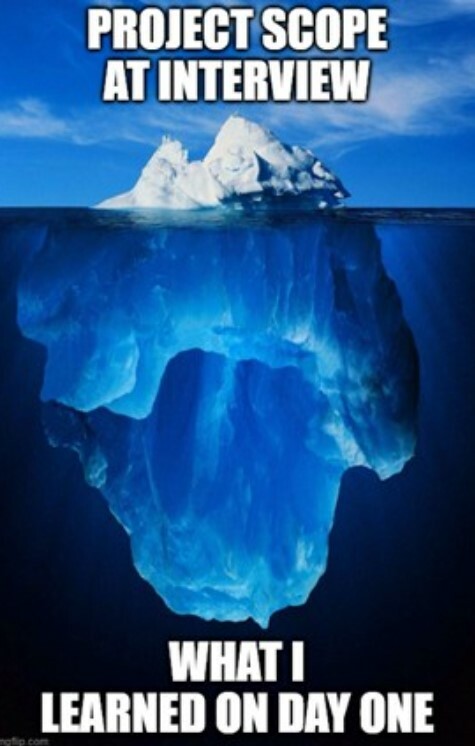Every time you think up something, get prepared and write a scope of work before making the idea real. .
This guide is aimed at giving you an insight into how to write a really solid piece of work, which will be valid in any sphere. Especially relevant is this for those teams who are collaborating with third-party market players, because such a work roadmap will help everyone involved to stay on course and nail the project.
With this article, you will learn the following:
- What is a Scope of Work?
- How to Write a Solid Scope of Work and Not Go Crazy in 7 Steps
- SOW and Agile: Match or Unmatch?
- Bonus! Life-Saving Hacksy
What is a Scope of Work?
A scope of work (SOW) is quite a detailed agreement on the work two parties (e.g. a client and a vendor) are going to perform on a specific project. The document normally contains the specific features and nuances that may emerge during any project stage.
First off, a SOW guarantees that things get straight now to avoid pitfalls after. By outlining the statement, both parties agree upon what and how each participant should be doing to bring success. Basically, it is used as the practical framework for decision-making within a project: what is in scope and what is out.

So, what is the secret of a skillfully written SOW? Of course, it is all about the contents:
- Problem statement: What is the problem? How are you going to solve it by performing this project?
- Milestones: When does the project start and finish? What are the major phases across the schedule that the team may easily manage and evaluate?
- Action plan: What are the steps that every employee should take in order to successfully deliver the project altogether with the team?
- Deliverables: What are you planning to get at the end of the project? A product? A software? A report? In what format?
- Terms and conditions: Rights and responsibilities, requirements, anything that makes a SOW a well-structured business document.
- Payment details: How much is the project supposed to cost for each stakeholder? How are you planning to pay the specialists who are involved in?
- Expected outcomes: What business solution will you get after the project finishes? What is the objective that you are willing to complete with this project?
All in all, the aim here is to ward off any misunderstanding and conflicts between project players. Not to mention, a SOW has proven itself as quite an efficient remedy for selective memory – a sort of an excuse that some people like to overindulge from time to time.
Learn more about RedmineUP Solutions!
How to Write a Solid Scope of Work and Not Go Crazy in 7 Steps

Step 1. Feel it out
Everyone knows that before a person goes diving, he should wear a mask and snorkel. This universal truth may be applied in our case, too. Before you dive into the scope, arm yourself with all the information that you need. Define the type of work your team is going to perform and outline other parties involved. Describe the kind of problem you are facing, that is to say, write a problem statement.
Migrate to secure hosting
Don't waste your time on Redmine maintenance. Hire experts and focus on your projects
Step 2. List your objectives out
Imagine that you are going to defend the project, so make your objectives crystal clear. What will the project bring its stakeholders and the market in general? What outcomes do you expect in the end? This step does not require a very detailed description, so do not get into details too much. Just send a strong message and prove the project profitability.

Step 3. Outline individual tasks
First, make a checklist or just give a profound explanation that your team should make to deliver the project. For example, your team is going to perform a new software. Probably, your scope will include such steps as “Write a backend code”, “Develop a unique design”, “Start an advertising campaign”, etc.
Second, divide these milestones into small manageable chunks between your team and outside players. It is a great way to track your progress and report on it regularly and in good time. Also, be highly specific. What kind of action do you expect from each employee? This will ensure that everyone is staying in tune, especially your partners.
Learn more about RedmineUP Solutions!
Step 4. Define deadlines

It is high time to make a SOW time schedule. So, you are not just having thoughts on how long the project will last and when it will be completed, but have them documented. Set the start and end dates and define the milestones and phases that the project will include. The important thing here is to leave some place for adapting the process, which might be essential in some cases like working in an Agile team. You may set just a maximum of time that a task is allowed to be in process.
Next, think of regular meetings: when and how will they be held? In life? In Zoom? No doubt, ongoing discussions are a must-have in any business. So be consistent and meet up with your team and partners on a regular basis. Plus, stay open about human and financial resources. Are your resources and the resources of your partner matching up with the project’s needs? If not, it is better to solve this on the go.
Migrate to secure hosting
Don't waste your time on Redmine maintenance. Hire experts and focus on your projects
Step 5. Specify deliverables
This section is about what you are willing to get as your project’s result. Typically, it is logically derived from your task list, so in our example the deliverables might be: a software backend and frontend, as well as a sustainable marketing strategy. It is also possible to combine both time schedule and deliverables so that you will see a better picture of how the project is going and where the possible traps may be hidden.
Step 6. Add missing information
Make some administrative work so that there are not any blanks left. Simply put, include into your document such information as payment methods, terms and conditions, requirements, and reporting.

Step 7. Determine success criteria
To conclude, finish your SOW with writing down the criteria that will be applied to evaluate your project. How are you going to define whether it is acceptable work or not? Who will authorize the deliverables? Remember: it is all about transparency, so do not put this step off and spend time on including some sign-off guidelines.
Congratulations! The paperwork is finally finished and the time has come to plunge in some real work. All the more, you got an indispensable assistant well-documented.
Learn more about RedmineUP Solutions!
SOW and Agile: Match or Unmatch?

Well, you may say, “Okay, I agree that a SOW is a great tool, but how am I able to adapt it as an Agile team manager? Taking into account the sprints we got used to working in.” That is a fair point. However, the trick here is to achieve a balance between flexibility and structure.
Just ask yourself: What do I know for sure? What will clear up only in the process? Leave space for possible pivots and make some wise predictions. After all, it is what defines a good manager, not only a businessman. To do so, divide your projects into phases and get ready to maneuver once you are in the project.
Some parts could contain in-depth information, some remain rather sketchy. That is totally fine! Do not let unforeseen circumstances mislead your project. Instead, collaborate with your partners and move forward.
Migrate to secure hosting
Don't waste your time on Redmine maintenance. Hire experts and focus on your projects
Bonus! Life-Saving Hacks
- Do not spare the details. The more you give explanations, the better you get the result. What is more, provide your work with definitions, if there are some terms or acronyms. Make sure that every piece of information is chewed enough.
- Use pictures to demonstrate what you mean. As the saying claims, one look is worth a thousand words. By the way, most people are visuals, so they tend to better absorb information if it is somehow depicted.
- Take advantage of the tech revolution. There are a lot of digital add-ons which are designed to make our life easier. Write a solid SOW with the help of a popular project management tool. RedmineUP will help you to calculate expected costs, make checklists, delegate individual tasks within a team and much more. Discover the wonderful world of RedmineUP – try our free trial!


